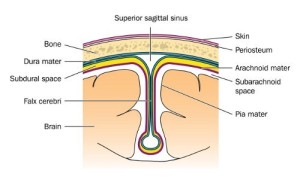Introduction
Another cause of headaches can be a subdural hematoma, which usually is caused by head trauma in a prematurely born baby during a difficult birth or which is caused by a fall in an elderly person or head trauma in a person who is on blood thinners.
What is happening is that one of the blood vessels breaks and leaks blood, which accumulates between the “dura”, a tough membrane that coats the skull, and the skull itself.
Symptoms
As this takes up space there is pressure on the adjacent healthy brain tissue and this causes the headache and other symptoms such as dizziness, seizures, and a rapidly enlarging head in prematurely born infants.
Diagnostic Tests
This consists of ultrasounds in newborns, possibly CT and MRI scans in adults and blood tests to check the status of blood thinning.
Treatment
In newborns the pediatrician usually takes off a small portion of blood every day through puncture wounds to relieve the pressure onto the brain. If within two weeks this has not stopped the bleeding along with vitamin K treatment, a neurosurgeon would be consulted who can insert a subdural shunt.
In an old person where a fall in a nursing home is often the cause for the subdural hematoma, neurosurgical drainage often can brighten up the confusion, mental deterioration, headaches and dementia like clinical presentation. When there is a blockage of the fluid drainage system inside the brain, called ventricular system, the condition hydrocephalus develops, which requires shunt surgery.
References
1. Goldman: Cecil Textbook of Medicine, 21st ed.,2000, W. B. Saunders Company
2. B. Sears: “The top 100 zone foods”. Regan Books, Harper Collins, 2001.
3. The Merck Manual, 7th edition, by M. H. Beers et al., Whitehouse Station, N.J., 1999. Chapter 176.
4. Noble: Textbook of Primary Care Medicine, 3rd ed.,2001, Mosby, Inc.
5. Goroll: Primary Care Medicine, 4th ed.,2000, Lippincott Williams & Wilkins
6.Rosen: Emergency Medicine: Concepts and Clinical Practice, 4th ed., 1998, Mosby-Year Book, Inc.
7. Ruddy: Kelley’s Textbook of Rheumatology, 6th ed.,2001, W. B. Saunders Company
8. Ferri: Ferri’s Clinical Advisor: Instant Diagnosis and Treatment, 2004 ed., Copyright © 2004 Mosby, Inc.
9. Rakel: Conn’s Current Therapy 2004, 56th ed., Copyright © 2004 Elsevier







